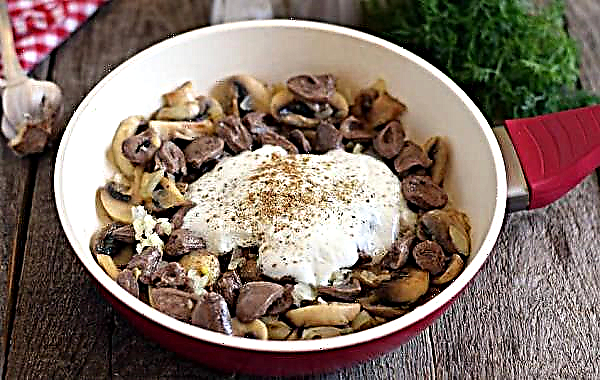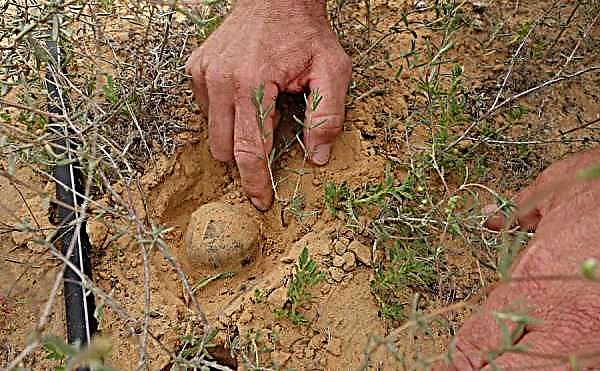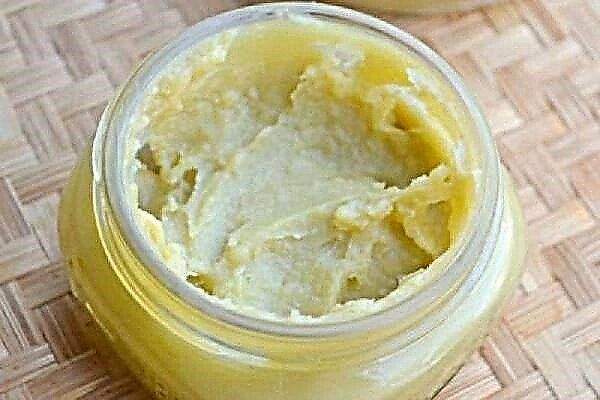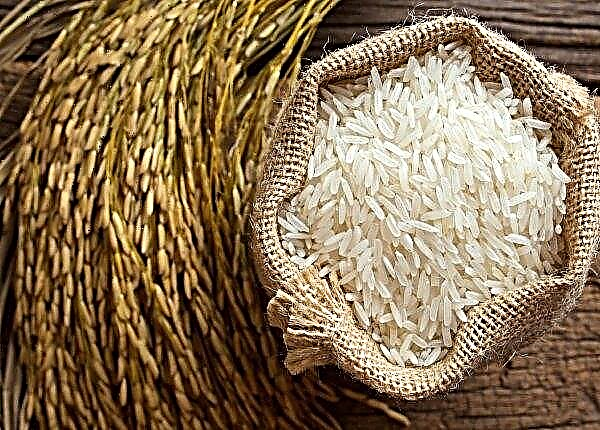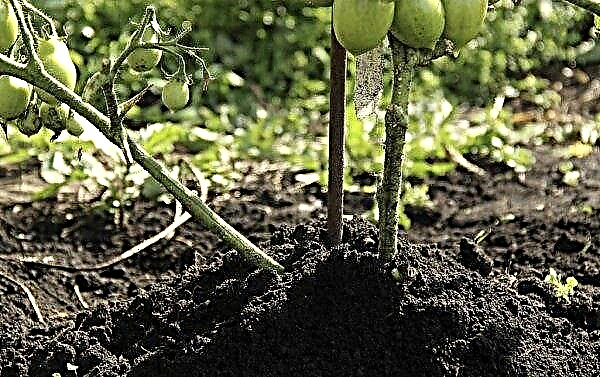The cultivation of new hazel (hazelnut) plants from cuttings is not a simple matter, because in nature their reproduction occurs mainly in the vegetative way, i.e., root shoots and shoots. But if you try, it is still feasible. Read about how a plant looks and how to properly carry out the process of its propagation.
Description of hazel
Hazel is a shrub that grows from 2 to 5 m in height. Its distribution area is Europe, the Caucasus and the Middle East. The bush is found in deciduous and coniferous forests.
The top of the plant has the shape of a ball or oval. The surface of the bark is smooth, has a brownish-gray color. Shoots - thin, brown with a gray tint, have a slight pubescence over the entire surface. Rhizome - powerful, develops over 3 years. First, the main rod-shaped root is formed, and then the processes going to the sides.
The kidneys are ovoid in shape. They reach a length of 3 mm, their color is red or brown. Leaf blades in a light green hue. The shape of the leaf is oval, with a point to the top and notches along the edges. Its length can reach 12 cm and a width of 9 cm. Nuts - single-seeded with a dense shell. The shape of the fruit is spherical, slightly pointed to the top. The color of the shell is light brown or grayish.Did you know? According to the ancient Slavic belief, on the eve of Trinity the souls of deceased relatives dwell in the branches of hazel.

Cutting hazelnuts at home
Hazelnuts are one of the cultivated varieties of hazel. Propagating it at home, you can use the cuttings method, but you must remember that this method is very difficult for an ordinary gardener.
To succeed, it is necessary to provide the cuttings with special conditions:
- high humidity;
- nutrient composition of the soil.
 Green rooting branches must be cut from late June to mid July. Take shoots 15–20 cm long. They should have 5 buds.
Green rooting branches must be cut from late June to mid July. Take shoots 15–20 cm long. They should have 5 buds.To root the cuttings, a special substrate is prepared, consisting of peat and river sand, taken in equal proportions. The growing tank should have drainage holes. It is filled with a mixture of peat and sand and the cuttings are introduced to a depth of about 2 cm. Before performing this action, the lower section of the branch is treated with Kornevin powder and the upper section is covered with garden varnish.
When the planting process is completed, the plant is watered with a small amount of water. Pots with cuttings should be kept in greenhouse conditions, for which purpose such a structure can be built on the site:
- Dig a trench approximately 1–1.5 m long, depending on the amount of material being germinated. Its width should be 40-50 cm.
- Over the entire length of the trench, you need to place the film and fix it along the edges in any convenient way - for example, stones laid out at the edges.
- The resulting reservoir is filled with water, approximately to the middle.
- Bricks are immersed in water - so that they get a stand for containers with cuttings. It should be 20-30 cm higher than the water level.
- After placing the containers over the trench, iron or plastic arcs are installed and the film is pulled.

In such conditions, rooting is easier, and after 2 months a full-fledged seedling is obtained. If there is no way to build a trench, the plant will need constant moisture in the air and soil. So that roots can be formed on the cuttings, you can use the technique of cuttings in the newspaper.
To conduct such a process, you need:
- Cut shoots 20 cm long.
- Wrap the cuttings in several layers of the newspaper so that there are no gaps.
- Next, moisten the resulting roll with plenty of water and place in a plastic bag or pike perch.
- Each week, the newspaper must be deployed and replaced with a new one. Inspect cuttings for mold and rot - if any, then the shoot is removed.
- The root formation process can last from 4 to 8 weeks.

Propagation by cuttings can also be done at home, in an ordinary plastic bag. This will require:
- Take a dense transparent bag and fill its third part with a mixture of peat and sand.
- Cut the cuttings with the “Kornevin” preparation and inject them into the substrate in a bag 3 cm deep.
- Seal the bag at the top and place it carefully on the windowsill.
- Rhizome formation under such conditions can take from 6 to 12 weeks.

Further hazelnut care
Rooted cuttings are transplanted into larger containers for growing. During this period, plant care should be regular. Potted soil should be loosened 2 times a month. Watering is carried out as the earthen coma dries.
Important! So that a dense earthen crust does not form around the trunk, preventing the rhizome from receiving oxygen, loosening the soil to a depth of 10 cm is carried out 2-3 times a month.
By the fall of next year, full-grown seedlings will be obtained from cuttings, which can be planted in open ground for further cultivation of hazel. A landing pit is prepared 1-2 months before the landing process. Dig a hole 60 cm deep and 50 cm wide. Fertilizers consisting of 10 kg of humus, 60 g of potassium sulfate and 200 g of wood ash are applied to the bottom of the pit. This mixture is mixed with chernozem and left until the seedling is planted.
Step-by-step instructions for planting hazel:
- Loosen the soil in an already prepared pit.
- Water the earth with 5 liters of water.
- Introduce the seedling by gently spreading the rhizome on the ground.
- Add to the top of the hole with ordinary soil and press firmly.
- Pour 10 liters of water. Mulch the trunk circle with peat or sawdust.

Further plant care consists in timely watering and fertilizing. Hazelnut irrigation should be carried out 2 times a month or more often, depending on weather conditions. Water is brought into a specially dug trench near the trunk, its amount is 10-15 l per adult shrub.
Hazel must be fed with organic fertilizers, which are applied once every 2 years. For digging take 5 kg of humus per 1 m². Mineral fertilizers are supplied in the form of “OMU” preparation, which includes a mixture of nitrogen, phosphorus, potassium, magnesium and humic compounds. Top dressing is used in an amount of 60 g per 1 m², it is introduced by digging the soil or scattering.
Other methods of breeding hazel
Hazelnuts can be propagated by vaccination, seed method and layering. To propagate hazelnuts with seeds, you need to carefully choose planting material. For this, the best nuts are selected from the harvested crop, on which there are no chips, diaper rash and other flaws. Seeds are immersed in water for 5 days, after which they are dried and placed in a plastic bag with wet sand for further stratification. The container with nuts is kept in a dark place at a temperature of 0 ° C to + 5 ° C. The process lasts about 4 months, and with the onset of the thaw, nuts are planted in the ground.
For propagation by layering, in early spring you need to dig a trench near the bush. It should be a depth of 8 cm and a length of 50 cm. A shoot of 1.5 m in length is bent to this groove and nipped in the middle with a wooden hook to the ground, after which the trench is covered with soil. So the layering will be bent in the form of an arc. The part of the shoot remaining on the surface must be tied to a peg. By autumn, the cuttings will form a rhizome and will be ready for transplantation to a new place.
Vaccination is carried out in the spring. As a stock of hazelnuts, you can take Bear nut or Common hazel. On the plant, choose the branch on which the vaccination will be made. A cut is made on it and a little crust is split. The graft is prepared from annual shoots on which an oblique incision is made. A shoot is inserted into the cortex and tightly wrapped with electrical tape to the rootstock.

So, propagating hazelnuts with cuttings is a rather time-consuming process. But, if you follow all the rules and have patience, you can get high-quality seedlings that are distinguished by good immunity and productivity.


